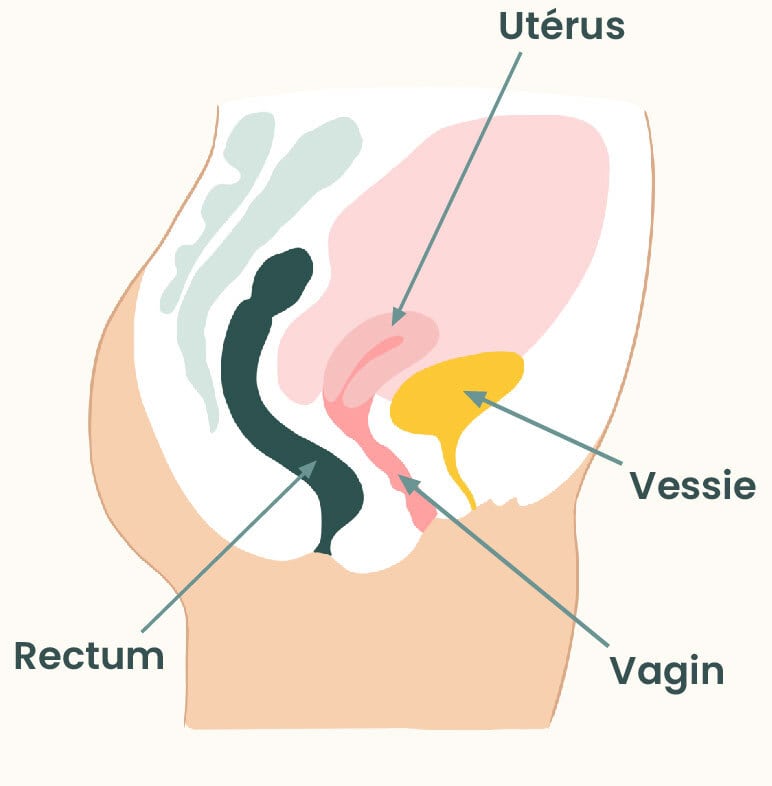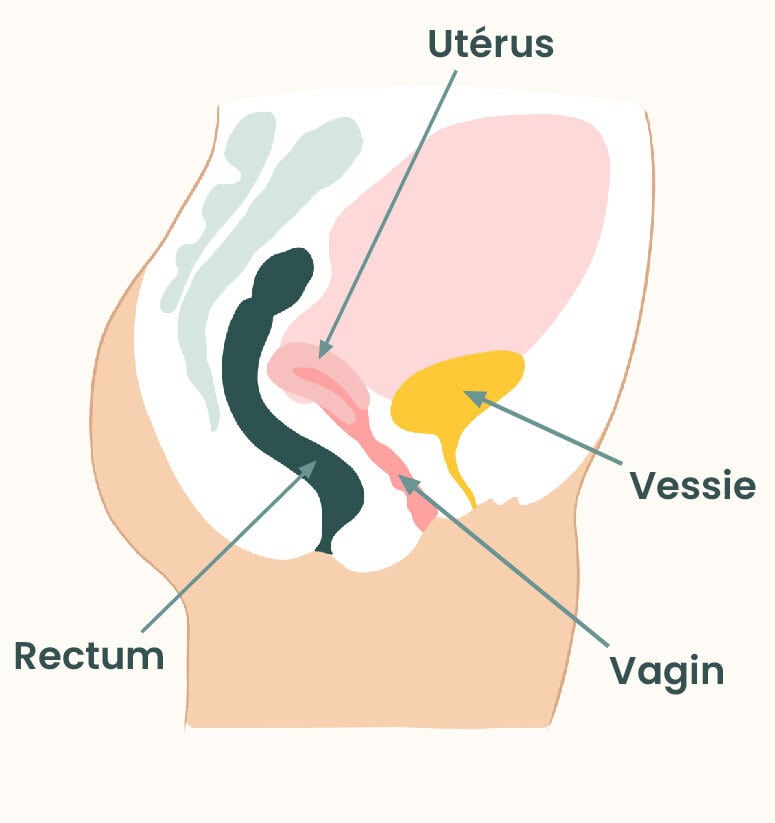
The uterus is a smooth muscle, best known for its major role during pregnancy. It is where the embryo and then the fetus settle, and it plays a key role in protecting and supporting their development. As a result, the uterus undergoes enormous changes throughout pregnancy and even afterward during the postpartum period.
In a small percentage of women, the uterus is said to be “retroverted.” What does that mean? Can a retroverted uterus affect a pregnancy? Here’s everything you need to know!
What is a retroverted uterus?
Before any explanation, let’s reassure you right away: despite its somewhat alarming name, a retroverted uterus is not a major issue in a woman’s life. In fact, it’s more of a simple anatomical variation than a real “problem” or a malformation.
A uterus can either be “anteverted” or, on the contrary (and this is what concerns us here), “retroverted.” These terms simply refer to the natural orientation of the uterus in your body, which has no real impact on daily life or during pregnancy. Concretely:
➡️The anteverted uterus tilts toward the front of the body (toward the bladder). This is the most common orientation, as nearly 75% of women have an anteverted uterus.

Everything you need to know about pregnancy with a retroverted uterus – May App Santé
➡️The retroverted uterus, on the other hand, tilts toward the back of the body (closer to the rectum). “Only” 25% of women have a retroverted uterus.

Everything you need to know about pregnancy with a retroverted uterus – May App Santé
How is a retroverted uterus diagnosed?
A retroverted uterus can only be diagnosed during a medical examination, by a gynecologist, a midwife, and/or during an ultrasound.
Since the backward orientation of the uterus, rather than forward, causes little to no symptoms, it’s not uncommon to go through much of your life without ever knowing you have one.
Pregnancy can be an opportunity to identify a retroverted uterus. In fact, the first trimester ultrasound (which takes place between 11 and 13 weeks of amenorrhea), or even the dating ultrasound (from 7 weeks of amenorrhea), can reveal this anatomical variation. In any case, after this third month of pregnancy, many changes are about to happen in your body, especially regarding your uterus.
Can a retroverted uterus be corrected?
Since a retroverted uterus doesn’t usually cause any real discomfort (except in very rare cases: pain in certain sexual positions and more intense menstrual cramps, although the latter hasn’t been scientifically proven), it’s often unnecessary to correct its orientation.
Even better, during pregnancy, the retroverted uterus will naturally “correct” its orientation on its own.
Indeed, a retroverted uterus won’t be able to continue growing backward: as soon as there isn’t enough room for it to develop (usually around the third month), it will begin to straighten up and eventually tilt forward.
Overnight, your uterus will occupy a brand new position in your body, which can cause some mild discomfort, which we’ll discuss below.
Is it possible to get pregnant with a retroverted uterus?
Absolutely! As we’ve seen, the orientation of your uterus has no real impact, nor any direct consequences on your health (or that of your future baby, for that matter). It is therefore perfectly possible to get pregnant with a retroverted uterus.
This anatomical variation does not affect a woman’s fertility or the implantation of the embryo in the uterine endometrium.
Want to learn more? Feel free to download the May app, where you’ll find plenty of resources to support and guide you throughout your pregnancy.
Does a retroverted uterus affect pregnancy?
As we’ve seen, a retroverted uterus has little to no effect on pregnancy: neither on your chances of conceiving nor on the fetus’s development.
However, during pregnancy, your uterus will tilt forward, often almost overnight. It will find a new place in your body, pushing other organs around it (especially the bladder).
It’s common to feel some pulling sensations, ligament pain, and very frequent urges to urinate while your body adjusts.
On the bright side, thanks to this new orientation, your rectum will be relieved, which will significantly improve any constipation problems you might have had.
You can relieve these symptoms with heat: a hot water bottle, a warm bath, and/or a hot shower are your best allies.
As long as the pulling sensations are mild and there’s no bleeding, there’s no need to worry: they are a sign that the pregnancy is progressing and that the uterus is growing well. You might also feel very little or no discomfort at all, and that’s perfectly normal too!
Every pregnancy is different, and every woman’s body reacts differently. Also remember that pregnancy is a stage in your life that is closely monitored by your general practitioner, gynecologist, or midwife: if any problem arises, they’ll be there to help you!
Of course, you should listen to your body: if you notice any symptoms that concern you or if you need reassurance on a specific point, don’t hesitate to consult.
Does a retroverted uterus cause complications during delivery?
As we’ve seen earlier, a retroverted uterus has very little influence on pregnancy. Moreover, the uterus naturally changes its orientation during the third month of pregnancy. By the time of delivery, it will have already tilted forward long before and adopted an anteverted position.
A retroverted uterus is therefore generally harmless and doesn’t usually require (except in special cases) any medical intervention. Of course, if you have any questions during your pregnancy, don’t hesitate to reach out to qualified healthcare professionals: it’s an essential step toward a peaceful pregnancy!
**
Photo : xapdemolle
This text was translated from French by an artificial intelligence. The information, advice, and sources it contains comply with French standards and may therefore not apply to your situation. Make sure to complement this reading by visiting the May ES/UK app and consulting the healthcare professionals who are supporting you.




